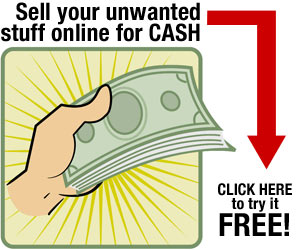Improving Your Email Deliverability Rate Can Help Keep Your Business Healthy During The Downturn!
Derek As the economy continues along its unsteady path, many small business owners have been asking me what they can do to keep their businesses financially healthy over the coming months.
Lots of people are wondering if they should be investing in fancy new site designs, or boosting their pay-per-click budgets, or hiring high-priced SEO experts to help them get better rankings.
Now, while I'm obviously not against spending more money on these sorts of things...
... I recommend you
start by leveraging the tools you already have, and make sure you're using them as efficiently and effectively as possible.
Take your email marketing, for instance.
Ensuring you have a smooth-running and reliable email marketing program is one of the surest ways to keep your business humming, without having to invest a lot of money!
I mean, think about it: what's
the BEST way to keep your sales and profits up during a slow economy?
Build solid relationships with your existing customers, so they keep coming back for more.
And what's the ideal way to build those relationships?
Yep, you guessed it...
When you stay in touch with your regular customers -- and email them valuable information -- they'll quickly view you as a credible resource, an expert in your field, and most important, someone who's watching out for their best interests.
And
they'll reward you with their loyalty (and continued purchases)!Unfortunately, many business owners take their email marketing for granted, and pay little attention to it beyond what their next promotion will be...
... and meanwhile,
the number of emails that actually make it to their customers' inboxes gets lower each week!That's because legitimate permission-based email can often be mistakenly identified as "spam," and sent straight to customers' spam, folders... if it gets delivered at all.
It kind of defeats the purpose of using email for customer retention if none of your customers are getting the emails, right?
Fortunately,
it's EASY to enjoy a high rate of deliverability with your email, if you understand a few basic spam rules.
So to make sure as much of your email is getting to your customers as possible, here are the
TOP TEN things you MUST do to avoid having your email mistakenly labelled as spam...
Rule #1: Keep ACCURATE records of EACH person who subscribesHaving detailed records is just good business practice, but in the case of your opt-ins, it's critical.
So make sure you keep track of the date, time, referring IP address, and referring web page for EACH person who signs up, along with their first name, last name, and email address.
You can quickly and easily prove that you're definitely NOT a spammer if you have details to back yourself up.
Rule #2: Track requests to opt out, and remove these people PRONTO!Once again, good record-keeping is the way to go. The CAN-SPAM act requires that you remove people who ask to opt out within 10 days of their request.
But why not play it safe? It's a good idea to implement your remove requests every couple of days, as well as before you do a new mailing.
Rule #3: Post your privacy policy on your websiteMake sure you let people know that you will NEVER sell or trade their names and email addresses when they opt-in, and make sure you STICK to that!
There's a second benefit to posting your privacy policy clearly:
you'll actually get MORE opt ins, because people will feel more comfortable sharing their information with you.
A clearly spelled-out privacy policy somewhere in your site, along with a direct link to it from your opt-in form, will go a long way in building credibility with your customers.
If you're unsure of how to write a privacy policy, I recommend you visit
this site, where you can have one generated for you, automatically.
Rule #4: Make sure you're using reputable service providersIf you're thinking of hiring a third party to manage your email for you, or rent email lists from, make sure you investigate them thoroughly before you sign on the dotted line.
When it comes to the Internet,
your reputation is only as good as the people who manage your email promotions for you, and you DON'T want to be hurt by someone else's bad behaviour.
Rule #5: Use rental lists with careThinking of renting an email list for a promotion? Make sure you take the time to review the form that was used to collect those names and email addresses.
Not only will you be able to tell if the people on the list have given their permission to the list broker to sell or rent their information, you should also be able to tell if the people on the list will be interested in your offer.
Rule #6: Use a REAL return email address with room to store bounce-backs and opt-outsWhile every email you send should have an "unsubscribe" link it in (more about that in a minute), you also need to honour any unsubscribe requests that people send to your regular email address.
So make sure it's possible for people on your list to reach you through regular email, and also make sure you've got room in your inbox to receive the messages. There's nothing worse than an unsubscribe request that can't be delivered!
And while it may be tempting to respond to the occasional angry unsubscribe email you may get from a disgruntled subscriber, your best course of action is simply to delete them promptly.
Rule #7: Provide easy instructions for how to unsubscribeEVERY email you send out MUST contain clear, simple instructions that tell people how to unsubscribe if they no longer wish to receive email from you... as well as a link they can click to unsubscribe automatically.
This is NOT negotiable. Any email sent out without unsubscribe information is officially spam!
Rule #8: Provide your valid physical addressEach email you send out must contain your physical address.
Consider creating an email template with your contact information in the footer, and then use this template for each email you write. You'll eliminate the possibility of accidentally sending out mail without this important detail.
Rule #9: Use a consistent "from" addressThe "from" line in your email must be valid and accurate -- the name of your business, for instance, or your own name (provided your name is well enough linked to your business that your customers will recognize it).
Your email address should also be clear enough for your customers to recognize. Some web-based email doesn't show the "from" line, so there needs to be another way for your customers to recognize you.
Rule #10: Use an authentic, non-misleading subject lineNobody likes to be fooled or tricked, and deception is the WRONG way to earn your customers' trust and respect, so make sure your subject line is related to your actual messages.
So if your subject line says Janet, three ways to save money, you need to make sure you actually are talking about that in your email, and preferably within the first few paragraphs.
Otherwise, your visitors will feel cheated, and that will hurt your credibility.
Email marketing is inexpensive, easily trackable, and extremely effective. And the reason it's so effective is that you send it to a highly targeted, selected group of people; your customers and subscribers who have a relationship with you and WANT to hear from you.
But even your legitimate mail can be snagged in the web of anti-spam measures...
If you follow these 10 simple rules, you'll have the best chance of getting your email delivered.
Keep your opt-in list clean, and your email promotions should be recognized for what they are... responsible opt-in email promotions, not spam.
And that's the
BEST way to continue to earn profits during the current economic downturn, without having to invest one additional penny!
To your success,
Derek Gehl
Internet Marketing Center













No comments:
Post a Comment